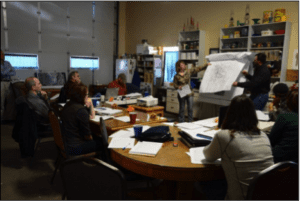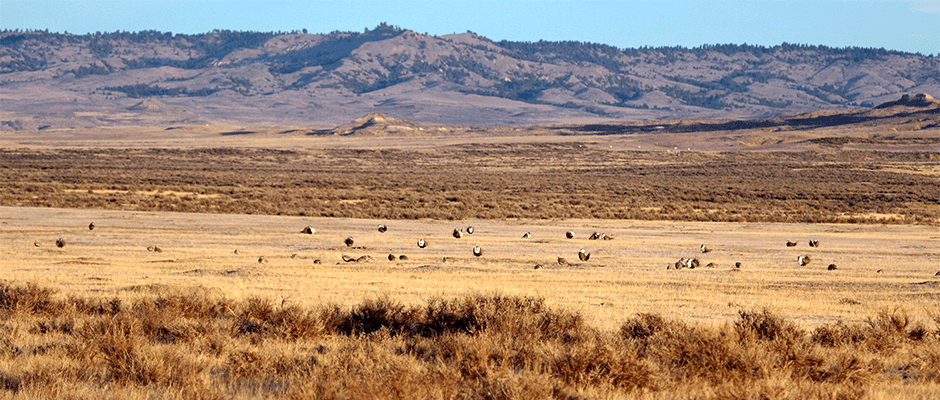Share this article
Thunder Basin nonprofit earns Group Achievement Award
The TWS Group Achievement Award recognizes up to one private or governmental organization each year for outstanding wildlife achievement that is consistent with and/or assists in advancing the objectives of The Wildlife Society. Click here to learn more about the criteria for the award.
The Thunder Basin Grasslands Prairie Ecosystem Association, a landowner-based organization that works to promote conservation in northeastern Wyoming, won the 2017 TWS Group Achievement Award.
“When we got the notification, it was exciting and in some ways a little astonishing,” said Dave Pellatz, the executive director of the association. “There was a lot of competition across the U.S., and certainly we had put in some of our efforts in the past.”
The organization, which started in 1999, integrates agricultural landowners and industries such as coalmines and independent oil and gas companies to conserve sagebrush steppe and short-grass prairie.

Surface coalmine owners present a conservation plan to the Thunder Basin Grassland Prairie Ecosystem Association. ©Dave Pellatz
“One of the things from our perspective that is really unique is the partnership between agriculture and energy, and how we’ve been able to effectively channel a lot of both efforts and dollars into conservation here in the state,” Pellatz said.
Agricultural producers implement conservation strategies on the ground, he said, while the energy companies provide the funds dedicated to conservation. “It’s a good match and allows us at this point over $2 million in funds in the local area.”
Getting everyone on board took some time and effort, Pellatz said, beginning with black-tailed prairie dog (Cynomys ludovicianus) management when the U.S. Fish and Wildlife Service was looking to propose listing them under the Endangered Species Act. “I think those concerns have encouraged people to go get involved since they’re wanting to be recognized for the good conservation practices and deploying and practicing them on their land,” he said. “This gives them a way to do that.”
Now, the organization works with USFWS to conserve eight different animal species. This includes implementation of incentive-based conservation strategies for species that inhabit sagebrush steppe and short-grass prairie.
So far, the association has worked with agricultural producers to help control cheat grass since 2006. They’ve worked on methods including herbicide spray and various grazing regimes. They have also worked together to tear down windmill towers on core sage-grouse (Centrocercus urophasianus) habitat and replace them with solar solutions. “This benefits both the sage-grouse and the agricultural producers as well,” Pellatz said.
The association has also worked with mine owners to help them best utilize their required reclamation areas to benefit wildlife. “We’re tying it back to native connectivity so species can actually use that,” he said. “I think that’s been a very powerful paradigm change for them and has had a lot of benefit. And I think they have gotten involved and have a much better understanding of what their vegetative plantings mean in the landscape versus just a number on paper that has to be fulfilled.”
So far, the organization has seen anecdotal evidence of more sage-grouse on these reclaimed areas, as well as raptors and other species.
Pellatz said he hopes to continue working to keep members engaged and committed to conservation with a goal of maintaining habitat and avoiding future listings of species.
Header Image: Sage-grouse gather during springtime to perform their mating dances on sagebrush in Thunder Basin National Grassland in Wyoming. The Thunder Basin Grassland Prairie Ecosystem Association recently won the TWS Group Achievement Award for their work on these lands. ©Christi Painter/USFS








